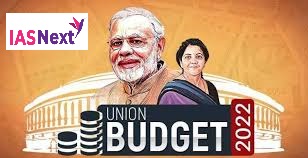CURRENT AFFAIRS
Get the most updated and recent current affair content on Padhaikaro.com
Five river linking projects announced in Union Budget
- IAS NEXT, Lucknow
- 03, Feb 2022

Reference News
Union Finance Minister Nirmala Sitharaman has proposed a project to link five rivers in India in her budget speech.
The rivers identified for linking are:
Godavari-Krishna, Krishna-Pennar and Pennar-Cauvery, Damanganga-Pinjal and Par-Tapi-Narmada.
A brief overview of these rivers:
- Krishna, the fourth largest river in India, originates in Mahabaleshwar in Maharashtra and flows through Maharashtra, Karnataka, Telangana and Andhra Pradesh.
- Cauvery originates in Kodagu and flows through Karnataka and Tamil Nadu.
- Penna originates in Chikkaballapura and flows through Karnataka, Tamil Nadu and Andhra Pradesh.
- Godavari which is the third largest river in India originates in Nashik and flows through Maharashtra, Telangana, Andhra Pradesh, Chhattisgarh and Orissa.
The Damanganga-Pinjal river linking aims to divert surplus water from the Damanganga basin to provide domestic water for Mumbai city.
- The Par-Tapi-Narmada project proposes to provide water to doubt-prone regions of Kutch and Saurashtra by diverting excess water from seven reservoirs in the Western Ghats in North Maharashtra and south Gujarat.
Benefits of interlinking:
- Enhances water and food security.
- Proper utilisation of water.
- Boost to agriculture.
- Disaster mitigation.
- Boost to transportation.
Issues and Concerns:
- Interlinking of rivers is a very expensive proposal. It will adversely affect land, forests, biodiversity, rivers and the livelihood of millions of people.
- Interlinking of rivers will lead to destruction of forests, wetlands and local water bodies, which are major groundwater recharge mechanisms.
- It causes massive displacement of people. Huge burden on the government to deal with the issue of rehabilitation of displaced people.
- Due to interlinking of rivers, there will be decrease in the amount of fresh water entering seas and this will cause a serious threat to the marine life.